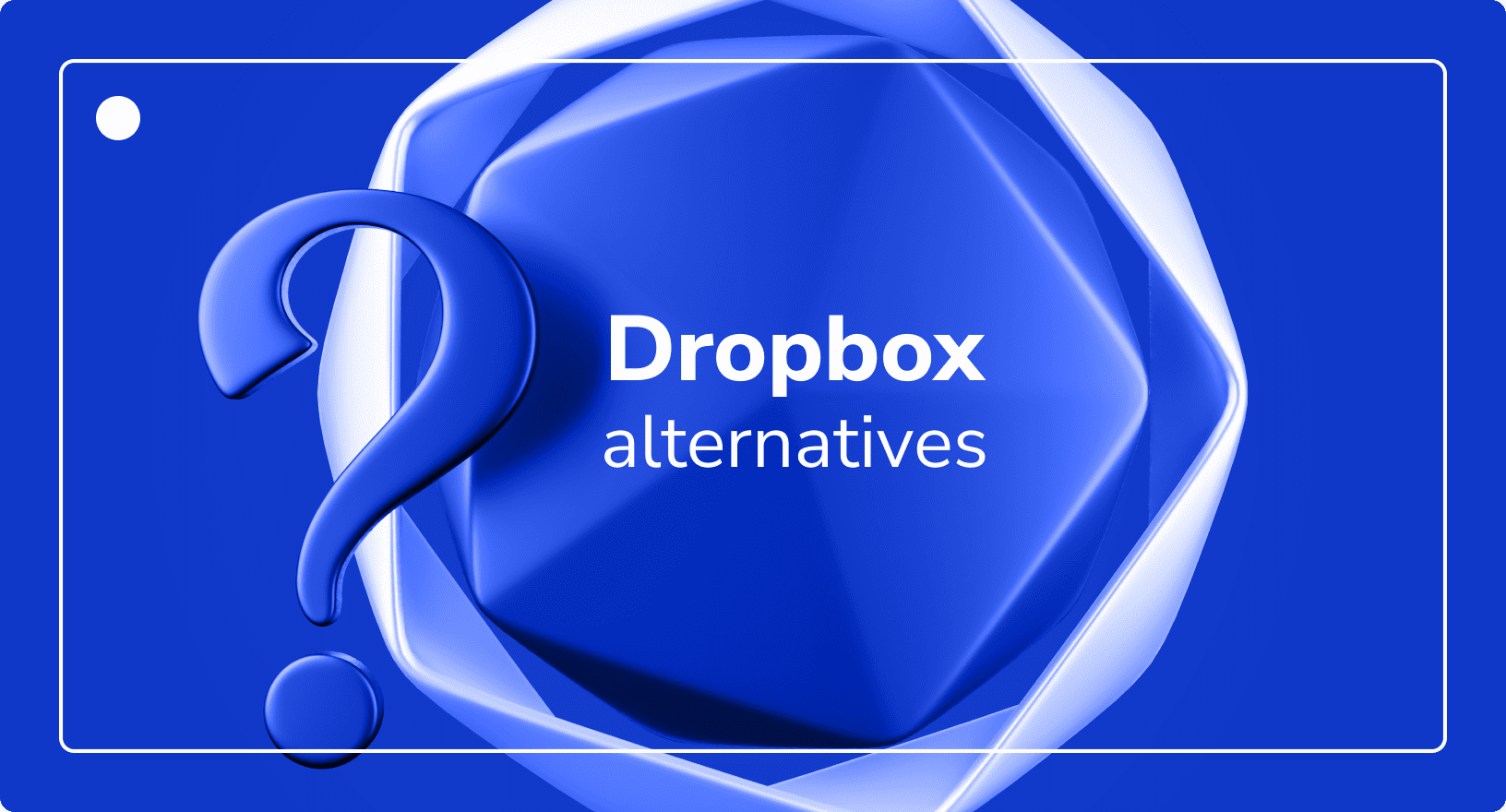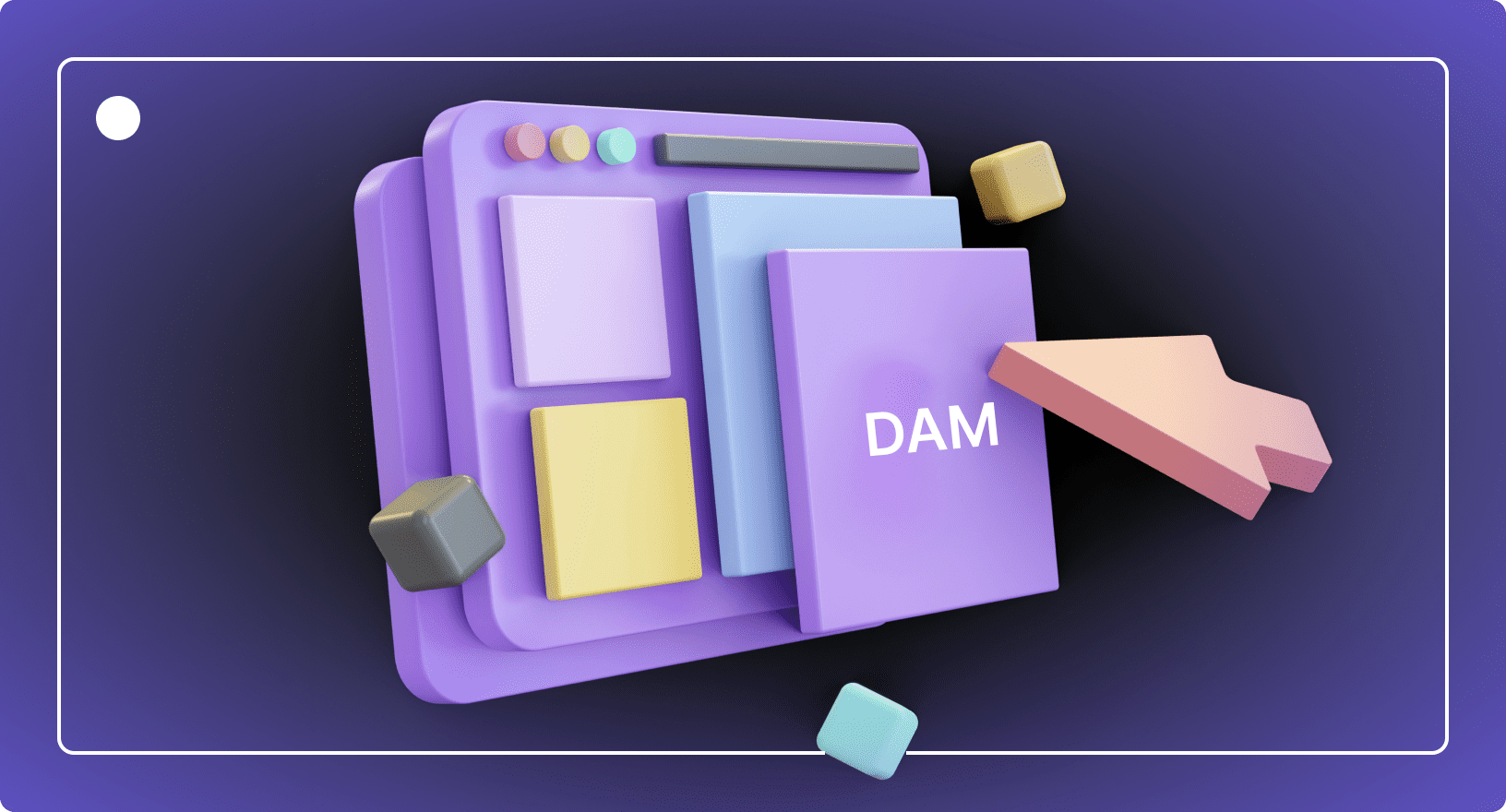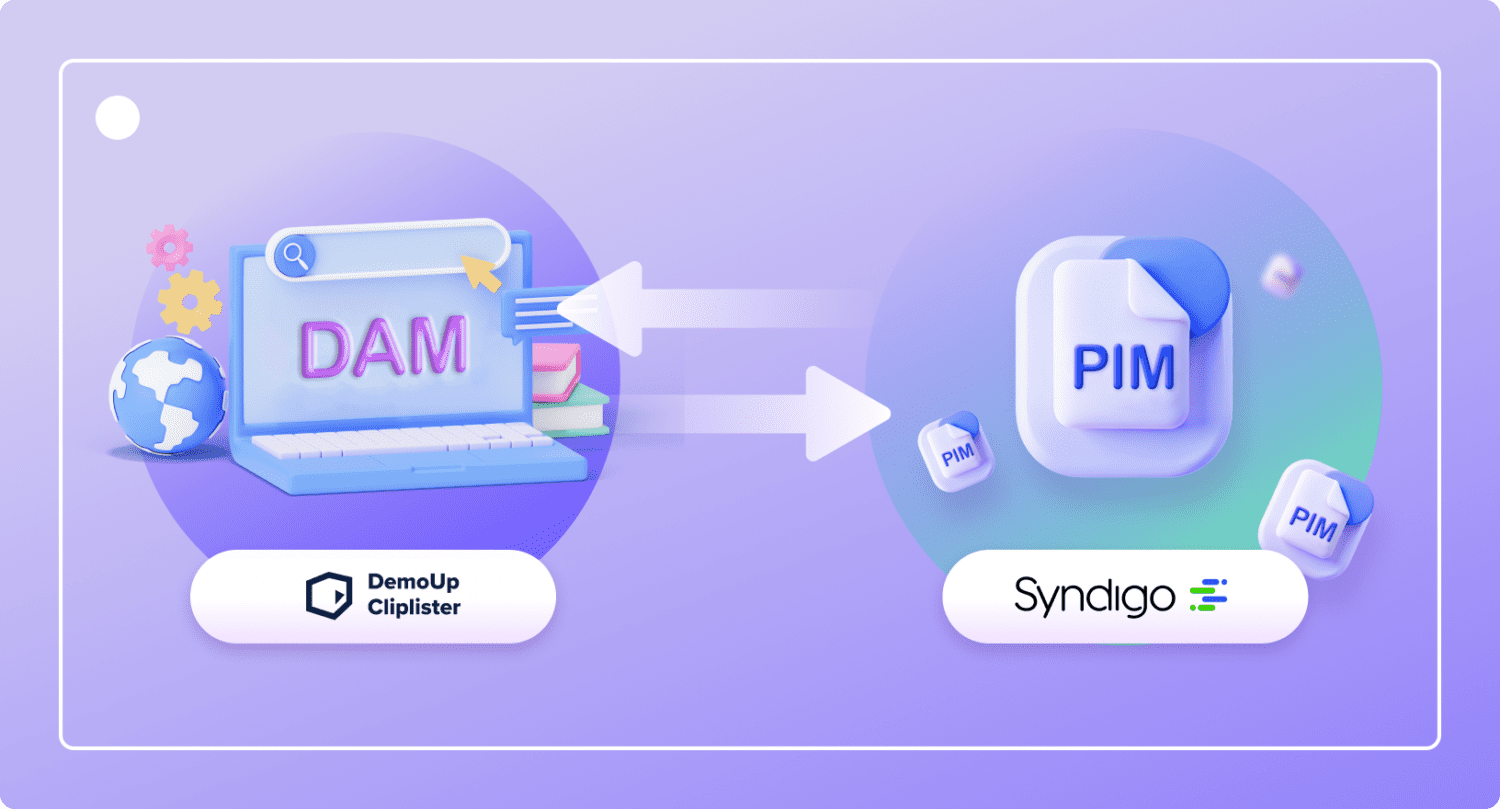The Benefits of Integrating Stibo Systems PIM and DAM from DemoUp Cliplister
Digital Asset Management
Updated on February 14, 2025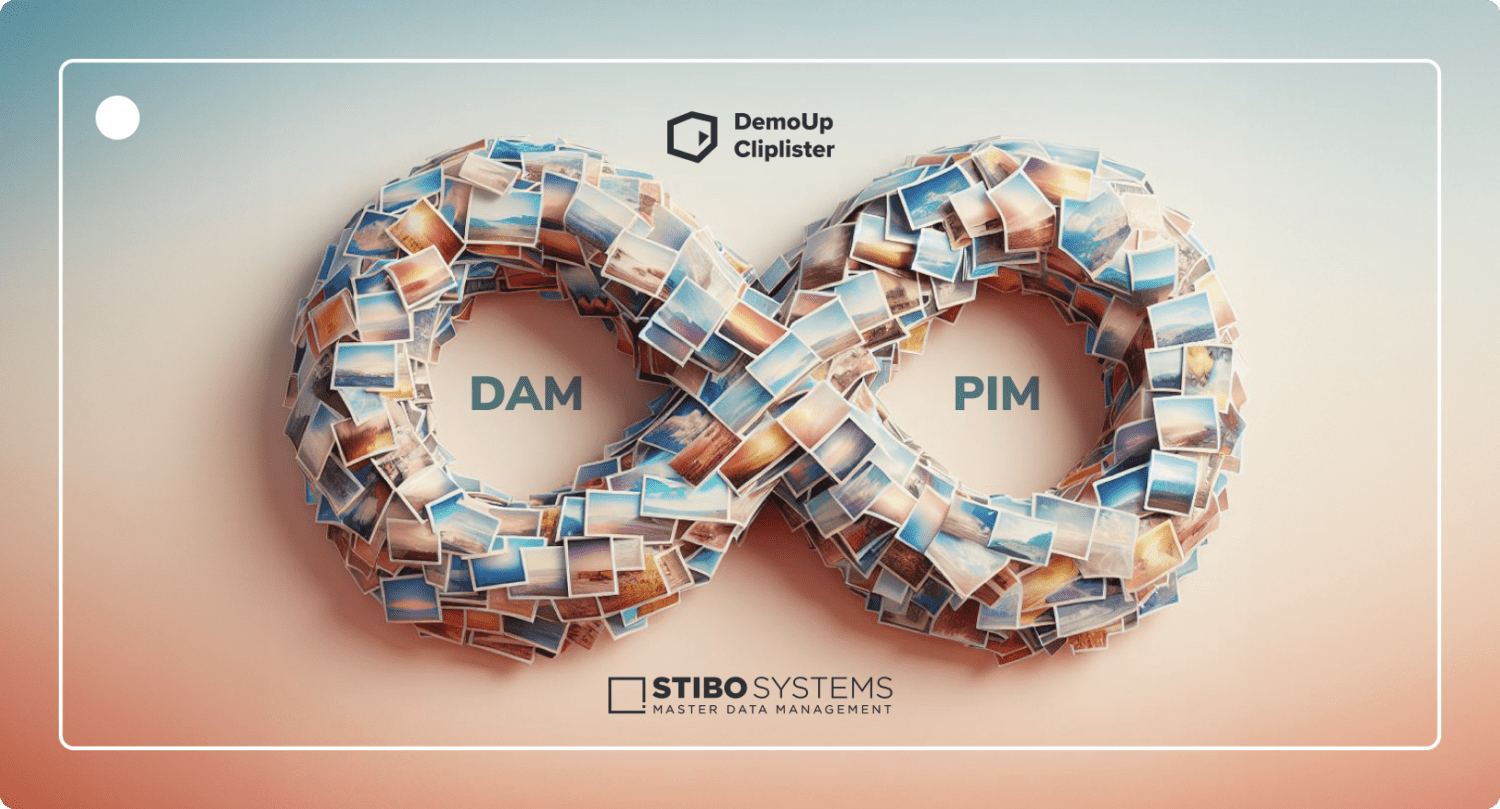
If you’re in e-commerce, you’ve probably heard the acronyms PIM (product information management) and DAM (digital asset management) used often.
On the surface, these systems may sound more similar than different. Both are used to store, manage, organise, and distribute product content.
But where each system falls short, the other excels. That makes a combined PIM and DAM integration invaluable for e-commerce today.
The rest of this article will explore the advantages and limitations of each system type, and how integrating the Stibo Systems PIM and DAM from DemoUp Cliplister provides a seamless flow of product content.
What is a PIM System?
A product information management system (PIM system) serves as the fundamental and single source of truth for storing, organising, sharing, and publishing product data and details.
These solutions help businesses manage large quantities of product information, which keeps everything accurate, up-to-date, and consistent.
This function of PIM software is key for managing the complexities of selling products in the digital age. Whether a business intends to sell products online, in a physical store, or across multiple platforms, it can rely heavily on its PIM software.
With a PIM, brands and shops can retrieve all necessary information, streamline the process of product information management, and become more efficient.
Another key advantage that a PIM system brings to the table is the ability to distribute product data effortlessly.
This includes not only basic product details but also extends to product images, product specification sheets, and a range of other product-related information.
A PIM can also quickly and easily distribute this data across multiple channels.
For instance, online retailers’ product pages can be updated with the most recent product descriptions and specifications, ensuring customers always get the latest and most accurate information.
In other words, a PIM acts as a central hub that harmonises and synchronises product information across all sales and marketing channels and ensures brand consistency on the digital shelf.
Benefits of a PIM Platform
If you are unfamiliar with the benefits of a PIM solution, here are some of the reasons companies invest in a PIM.
- Centralised product data management: A PIM platform is a central repository for all product information.
- More productivity: Streamline processes and reduce workloads involved in managing product information.
- Better product data quality: Most PIM solutions feature tools to validate rules and workflows to enhance data quality.
- Easier multichannel distribution: PIM solutions can organise and publish product data across multiple sales channels simultaneously.
- Faster time to market: Launch products more quickly across online sales channels
- Create a better customer experience: Combined PIM and DAM platforms can support other content like product images, videos, and technical specifications.
- Scalability: As a business grows, its product information grows exponentially. PIM platforms can scale with these requirements.
- Ensure compliance: Some industries have strict legal or digital rights management requirements. PIM systems can support this by supplying more accurate records.
- Lower costs: PIM systems automate much of the work related to product information management.
- Better analytics and insights: Businesses can more easily analyse data and gain insights into how products are performing across different channels, leading to more informed decision-making.
What is a DAM System?
A digital asset management system, or DAM system, is a highly effective tool that helps businesses store, organise, manage, and share all their digital content from a single, centralised location.
Much like how a PIM system serves as a single source of truth for all product data, DAM systems provide a similar solution for all types of files. This includes, but is not limited to, images, videos, 3D/AR files, PDFs, and more.
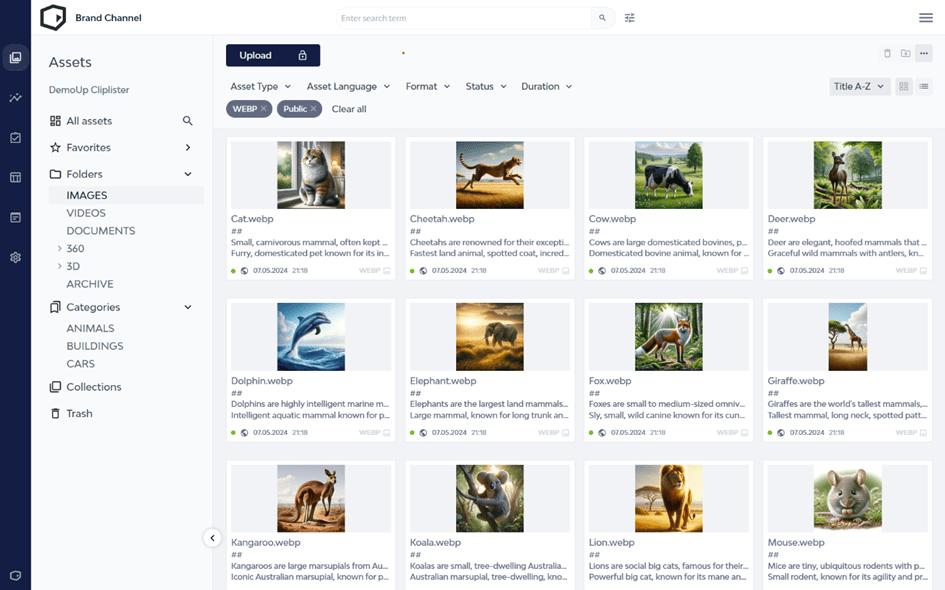
A DAM solution consolidates all these different types of digital assets into one place and helps ensure a high level of consistency across all departments within a company.
Teams ranging from marketing and sales to product development and engineering, and even up to leadership roles all can access the same assets. This consistency is important for maintaining a coherent brand identity.
Furthermore, the core capabilities of a DAM system extend beyond just storage and organisation. A DAM actively contributes to achieving operational efficiency by streamlining workflows and eliminating redundant tasks.
Lastly, a DAM provides controlled access to content, which ensures that only authorised personnel can access and modify a company’s digital assets.
Benefits of DAM platforms
DAM platforms are essential for marketing and creative teams. Here are the top benefits you get when you integrate DAM into your business:
- Centralised asset storage: A central repository for all digital assets like images, videos, documents, and other files.
- Improved organisation and searchability: Metadata tagging, and advanced search make it easy for users to organise and locate assets quickly.
- Better security: User permissions, version control, audit trails, and other features help ensure only authorised personnel can access content.
- Enhanced collaboration: Most DAM systems include tools for collaboration including sharing and review workflows.
- Brand consistency: Ensure the right people work on the right content at the right time, and that it’s published in the right place.
- Scalability: Like PIM platforms, DAM solutions scale exponentially with a business’s growth. This is important to handle increasing amounts of data without performance loss.
- Automation of repetitive tasks: Most DAM software can handle image resizing (for channel-specific content) or converting video formats.
- Faster time-to-market: Publish content faster and reduce the time it takes to launch marketing campaigns.
- Risk and compliance management: Comply with digital rights management and legal obligations by maintaining asset licences.
- Improved analytics and reporting: Most DAM solutions feature onboard analytics to help you optimise your content strategies based on real data and actionable insights.

Comparing DAM Providers? Download Our Guide!
Download nowWhy Should You Integrate PIM and DAM Systems?
The integration of PIM and DAM software significantly improves the efficiency and accuracy of managing product data. PIM solutions are great for managing all sorts of textual product data, including product specifications, descriptions, and pricing information.
On the other hand, a DAM system specialises in managing multimedia content, such as images, videos, and other digital assets associated with a product.
When these two powerful tools are integrated, they provide a comprehensive, seamless, and efficient flow of product information throughout a company.
This combined platform also helps ensure consistency across all channels, resulting in a more holistic data management approach.
Moreover, the integration of PIM and DAM functions reduces the risk of data duplication or redundancy, a common issue in many firms.
Storing all product-related data in a single, unified system ensures that all teams within an organisation have access to the most accurate and up-to-date product information. This minimises confusion, streamlines operations, and enhances productivity.
Furthermore, this significantly improves the customer experience.
Consistent and accurate product information disseminated across all platforms and channels helps customers receive clear, reliable information about products.
This also builds trust in your brand, leading to increased customer satisfaction metrics across the board.
What happens when PIM and DAM aren’t integrated?
When PIM and DAM systems aren’t integrated, several issues can arise that negatively impact operations.
Perhaps the most significant problem is the potential for inconsistencies in product information and digital assets.
Without integration, the same data could be stored in different formats and locations, leading to fragmentation. Fragmentation refers to the phenomenon of data being inconsistent across various platforms.
This inconsistency is confusing for both businesses and customers. For customers, this often leads to confusion and mistrust, which could potentially harm a business’s reputation.
Another issue caused by the lack of integration is the unnecessary duplication of data. When PIM and DAM systems are managed separately, the same data may be entered and stored in both.
This duplication not only wastes storage space but also wastes employees’ time since they must input the same data into both tools. Duplicated data also increases the risk of errors and inconsistencies, as updates to the data in one system may not be reflected in the other.
Inefficiencies in data management are also a huge concern when PIM and DAM systems aren’t integrated. Teams might have to spend extra time searching for the data they need, as it could be stored in either.
This inefficiency can lead to slower decision-making processes and reduced productivity, which can ultimately affect your bottom line.
Maintaining two separate systems requires additional time and resources, from managing user access to performing system upgrades and troubleshooting technical issues.
These additional tasks can take away from the time and resources that could have been used for more strategic, revenue-generating activities.
Seamlessly Integrate Stibo Systems PIM and DAM from DemoUp Cliplister
Luckily, integrating digital asset management and product information management doesn’t have to be hard. Our trusted partners Stibo Systems provide a comprehensive PIM solution that can seamlessly integrate into our digital asset management software.
As part of their master data management software, Stibo PIM helps you get product data and product information to the right place at the right time.
When combined, Stibo System PIM tools and the DemoUp Cliplister DAM create a comprehensive product content management system capable of handling data at scale across multiple channels.
This creates a seamless stream of marketing content from brands to retailers, which boosts e-commerce efficiency and helps both sides create consistent product experiences.
It also ensures your product data, product assets, and product specs all align directly on the product detail page.
This helps you create a consistent product experience across all product pages, build loyalty and trust, and ensure your product marketing efforts generate better returns at the point of sale.
How to Combine the DemoUp Cliplister DAM and PIM from Stibo Systems
Like implementing digital asset management software on a standalone basis, there are steps you need to follow to integrate the Stibo Systems PIM with the DemoUp Cliplister DAM.
Here is the basic outline of how to complete the integration.
- Define objectives and requirements: Goals help you understand what you want to achieve with your integration, while a needs analysis helps you understand exactly the types of data and assets that will be shared.
- Define project scope: This ensures all necessary elements and functionalities are identified and included. It also sets boundaries to prevent scope creep and keep the project manageable.
- Integrate the systems: When you combine the DemoUp Cliplister DAM with the PIM from Stibo Systems, this is done via an API.
- Map data and workflows: Map out how data and assets will flow between the systems. This includes identifying which data elements need to be shared, how they will be transformed during the transfer, and how they will be used in each system. Establish workflows that define the process of data exchange and update cycles.
- Implement data governance policies: Establish clear guidelines and standards for managing and maintaining data quality across both tools. This includes setting roles and responsibilities for data entry, updating processes, and quality control.
- Testing and validation: Conduct thorough testing to ensure that the integration works as intended. Validate data flows correctly between the systems, that workflows are functioning properly, and that there are no disruptions to existing operations.
- Training and support: Provide adequate training for all users on the new integration to ensure smooth adoption. Also, plan for ongoing support to address any issues that might arise after integration.
- Monitor and optimise: After integration, continuously monitor the systems’ performance and seek feedback from users. Use this information to optimise workflows, improve data quality, and enhance overall system efficiency. This ongoing process helps in adapting to new business needs and technological advancements.
Of course, if you have any questions throughout the integration process, you can contact us at any time or contact Stibo Systems for more information.
Results of the Integration
After the integration is complete, you can map digital assets to products in your PIM, work on DAM files from Stibo Systems’ Web UI, and ultimately have one holistic system to house and manage your product content.

The connection between Stibo Systems PIM and DemoUp Cliplister enables users to:
- Perform real-time searches of assets in DemoUp Cliplister to link to objects in PIM.
- Browse through all the Cliplister DAM assets or specific collections or channels built in the DemoUp Cliplister DAM to find the desired asset while in Stibo Systems PIM.
- Create asset references from the DemoUp Cliplister DAM to product information in Stibo Systems PIM.
- Upload assets from your personal machine to the DemoUp Cliplister DAM which simultaneously creates an asset in Stibo Systems PIM that references the Cliplister asset.
- View asset’s metadata from DemoUp Cliplister.
Wrapping Up
A combined PIM and DAM solution can benefit any business that manages large, complex product information and visual content libraries.
An integrated system will help you stay organised, publish content faster, and maximise your content’s impact.
Because PIM systems and DAM solutions are strong where the other is weak, more companies are turning to this holistic approach to product data. A PIM and DAM integration links digital assets with specific products in the PIM solution.
This is important for creating an effective approach to product experience management, which aims to ensure all product touchpoints are optimised throughout the buyer’s journey.
For more information about DemoUp Cliplister’s full product portfolio, visit the homepage. Or check out the blog for more tips, tricks, and strategies.
Frequently Asked Questions
Still have questions about how or why to integrate PIM and DAM systems? Read through the FAQ below for the most common queries about combining the solutions.
PIM and DAM integrations combine the functionalities of both systems to manage product information and associated digital assets like images, videos, and documents seamlessly. This integration ensures that all product-related data and media are centralised, streamlined, and accessible across multiple platforms.
Integrating Stibo Systems PIM with the DemoUp Cliplister DAM enhances product data consistency, improves marketing and sales effectiveness, and accelerates product time-to-market. By centralising data and assets, businesses can ensure accurate and up-to-date product information across all sales channels, reducing errors and improving customer satisfaction.
This integration addresses several challenges including data silos, inconsistent product information, inefficient workflows, and the high cost of managing product data and digital assets separately. It simplifies operations, enhances collaboration among teams, and improves product listing quality.
Yes, PIM and DM integration helps businesses deliver a superior online shopping experience by providing consistent and rich product information along with high-quality digital assets. This leads to increased customer engagement, higher conversion rates, and improved customer satisfaction.
Key features include centralised data management, automated workflows for asset tagging and management, advanced search capabilities for digital assets, and seamless synchronisation of product information with multimedia content. This ensures that all stakeholders have access to accurate and relevant product data and assets.
It significantly enhances e-commerce operations by providing detailed product listings complete with high-quality images, videos, and other relevant content. This integration supports better SEO, effective product discovery, and more engaging product presentations, ultimately driving sales.
Better Content. More Sales.

Fill out the form to discover our end-to-end eCommerce content solutions for brands & shops


